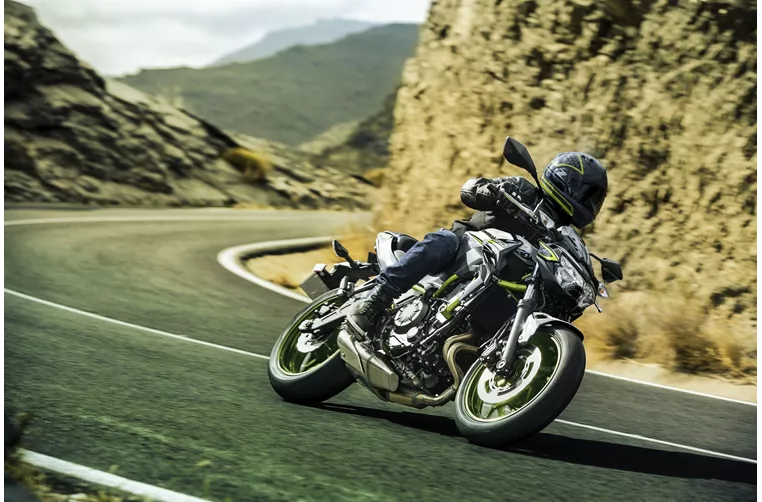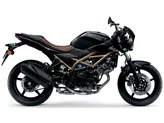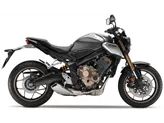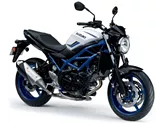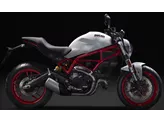Suzuki SV 650 2017 vs. Kawasaki Z650 2021

Suzuki SV 650 2017

Kawasaki Z650 2021
Overview - Suzuki SV 650 2017 vs Kawasaki Z650 2021
The Suzuki SV 650 2017 and the Kawasaki Z650 2021 are both naked bikes with similar engine specifications. The SV 650 is equipped with a V-twin engine, producing 76 HP of power and 64 Nm of torque, while the Z650 features an inline twin engine, delivering 68.2 HP of power and 65.7 Nm of torque. Both bikes have fuel injection systems, liquid cooling, and a displacement of around 650cc.
In terms of suspension, both bikes have telescopic forks at the front and swing arm suspension at the rear, with monoshock absorbers. The chassis of both bikes is made of steel and has a tubular frame design, providing stability and durability.
When it comes to braking, both bikes are equipped with double disc brakes at the front, but the Z650 has slightly larger discs with a diameter of 300mm compared to the SV 650's 290mm discs. Both bikes have double piston calipers for efficient braking performance. Additionally, both bikes are equipped with ABS for advanced rider assistance.

Suzuki SV 650 2017
In terms of dimensions and weights, the Z650 has a slightly shorter wheelbase of 1410mm compared to the SV 650's 1445mm. The seat height of the Z650 is also slightly higher at 790mm compared to the SV 650's 785mm. The Z650 has a larger fuel tank capacity of 15 liters, while the SV 650 has a capacity of 13.8 liters. The kerb weight of the Z650 is slightly lighter at 187.1 kg compared to the SV 650's 197 kg.
Now let's discuss the strengths and weaknesses of each bike. The Suzuki SV 650 2017 is known for its smooth engine performance, allowing for a comfortable and enjoyable ride. It also has playful handling and a great chassis, providing stability and maneuverability on the road. However, one weakness of the SV 650 is its weak brakes, which may not provide the desired stopping power for some riders.
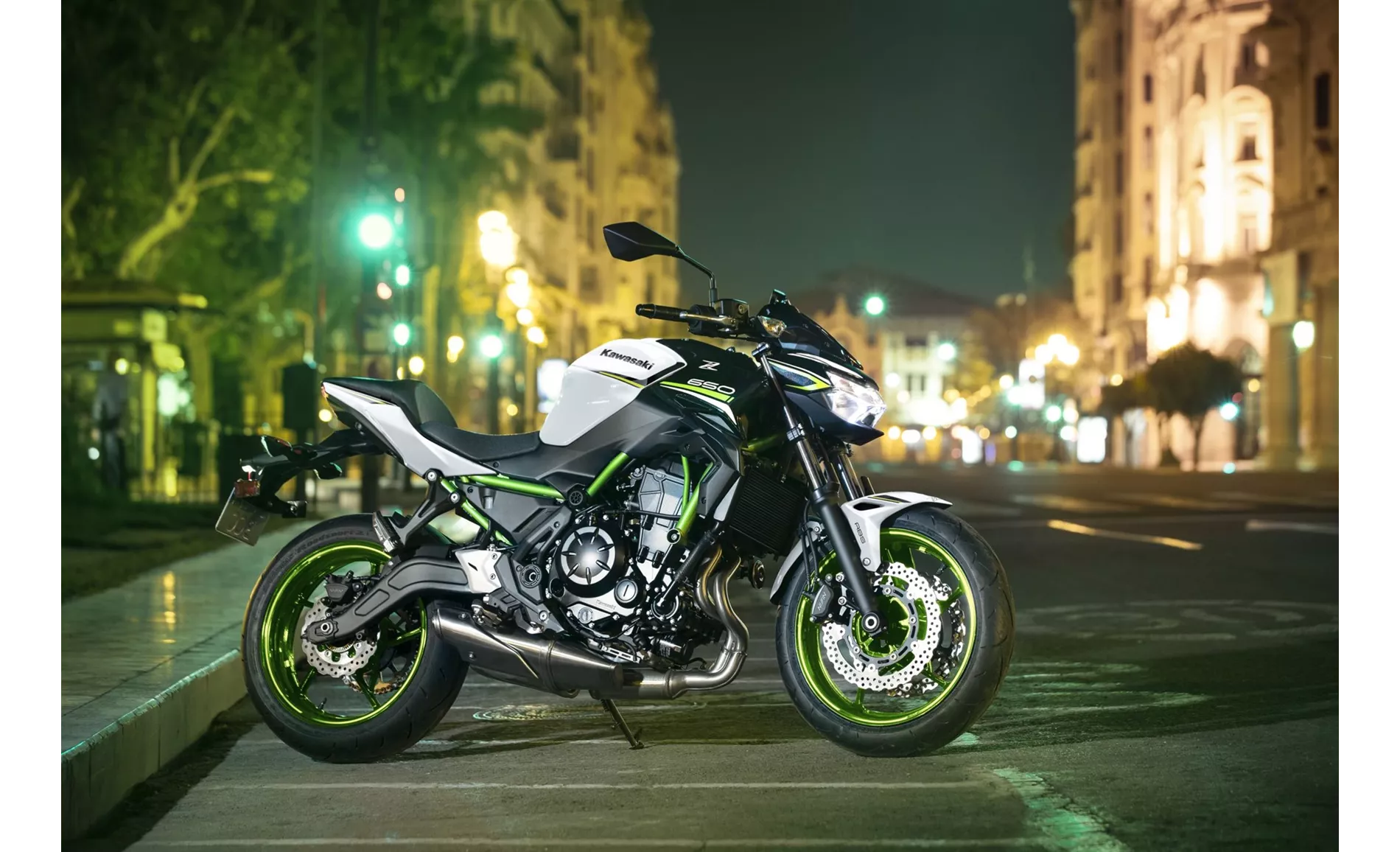
Kawasaki Z650 2021
On the other hand, the Kawasaki Z650 2021 has several strengths. It has an accessible two-cylinder engine, making it suitable for riders of different skill levels. The bike also has compact dimensions and a low seat height, making it easier to handle and maneuver in tight spaces. The Z650 features a stable chassis, ensuring a confident and stable ride. It also has a modern TFT display with connectivity, allowing riders to easily access information and connect their devices. Additionally, the Z650 has a more grown-up look compared to its competitors.
However, one potential weakness of the Z650 is that it may be uncomfortable for tall riders due to its compact dimensions. Additionally, some riders may find that the adrenaline level in the saddle is lower compared to other bikes in its class.
In conclusion, both the Suzuki SV 650 2017 and the Kawasaki Z650 2021 are capable naked bikes with their own strengths and weaknesses. The SV 650 offers a smooth engine and playful handling, while the Z650 provides accessibility, compact dimensions, and a stable chassis. Ultimately, the choice between the two will depend on the rider's preferences and priorities.
Technical Specifications Suzuki SV 650 2017 compared to Kawasaki Z650 2021
Pros and Cons in comparison
Pros and Cons in comparison
Suzuki SV 650 2017

The Suzuki SV 650 is accompanied by a long history of success that is sure to continue for a long time. Its supple V2 impresses with very smooth response and plenty of torque. Compact dimensions help to make the motorbike look very compact. This will be very convenient for beginners. The chassis also scores with playful handling. Unfortunately, the braking effect is not at the level one would expect from such a powerful vehicle.
Kawasaki Z650 2021
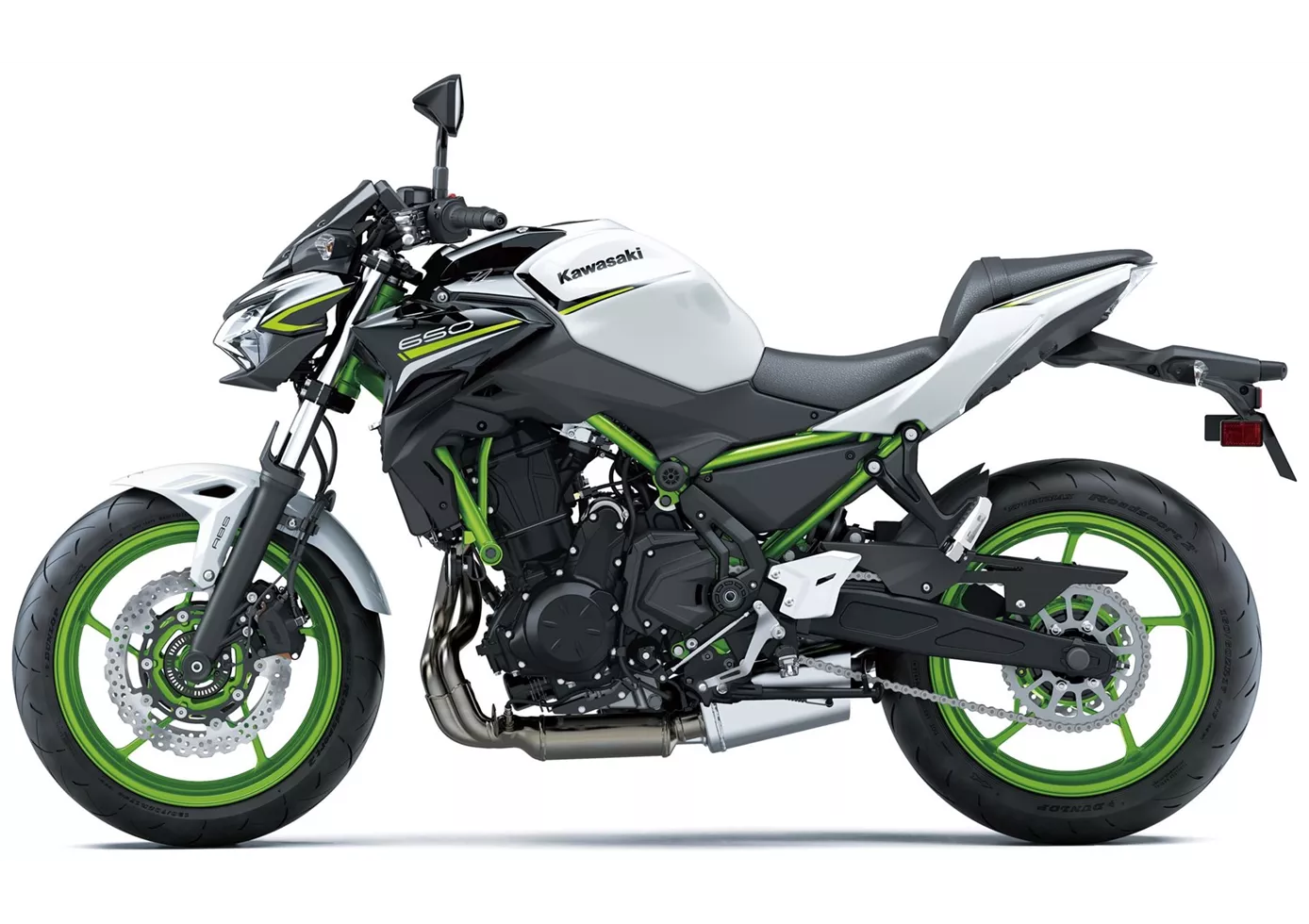
Even in 2021, the Kawasaki Z 650 stands for easy riding with great looks and good equipment. Both seat height and engine are very accessible and will give both experienced riders and newcomers a lot of pleasure. If you are looking for an honest naked bike without any big surprises, this is the bike for you. Due to its compact dimensions, however, you should try it out before buying and perhaps go for the raised seat.
Price Comparison Avarage Market Price Suzuki SV 650 vs Kawasaki Z650
There are a few key differences between a Suzuki SV 650 2017 and a Kawasaki Z650 2021. In terms of price, the actual average price of a Kawasaki Z650 2021 is about 13% higher. Compared to Kawasaki Z650 2021 there are less Suzuki SV 650 2017 bikes available on the 1000PS.de Marketplace, specifically 6 compared to 25. It takes less time to sell a Kawasaki Z650 with 106 days compared to 112 days for the Suzuki SV 650. Since model year 2005 1000PS.de editors have written 25 reviews for the Suzuki SV 650 and 31 reviews for the Kawasaki Z650 since model year 2017. The first review for the Suzuki SV 650 was published on 26/09/2008 and now has more than 14,200 views. This compares to more than 25,000 views for the first review on Kawasaki Z650 published on 08/11/2016.

